Parkin Micro CH03 - lecture PDF

| Title | Parkin Micro CH03 - lecture |
|---|---|
| Author | Saher Kassam |
| Course | Principles of Microeconomics |
| Institution | College of the North Atlantic |
| Pages | 17 |
| File Size | 591.5 KB |
| File Type | |
| Total Downloads | 40 |
| Total Views | 148 |
Summary
lecture...
Description
W H AT I S E C O N O M I C S ?
23
C h a p t e r
3
DEMAND AND SUPPLY
The Big Picture Where we have been: In Chapter 3, the students have their first encounter with demand and supply and the powerful forces that determine price and quantity in a competitive market. Chapter 3 builds on Chapter 2, which provides the simplest rigorous description of the economic problem and the implications of the pursuit of an efficient use of resources. If you have time, it is worth forging links between Chapters 2 and 3. Chapter 2 explains why we trade in markets. Chapter 3 shows how trade in markets determines where on the PPF the economy operates. Where we are going: Demand and supply lie at the heart of the principles course. Eventually in the microeconomics class we derive the demand curve and the supply curve from deeper views of the choices that people and firms make. And in the macroeconomic class, the lessons learned here apply, albeit with subtle differences, to the aggregate supply-aggregate demand model.
N e w i n t h e Tw e l f t h E d i t i o n The content of this chapter is largely the same except for the Economics in the News sections, which are now replaced with new current topics of coffee and bananas. The banana article is at the end of the chapter along with the extended Economic Analysis of the end-of-chapter articles. There is a reduction in the section covering all possible shifts of demand and supply. The content now focuses on situations where both curves shift, which allows for two simpler figures to be used to illustrate shifts. The single shifts of curves are already covered earlier so there is no loss of content. There is a new Worked Problem at the end of the chapter. The Worked Problem gives demand and supply schedules for roses and then asks the students how the market adjusts if the price is lower and higher than the equilibrium price. It follows up by asking the students to determine the equilibrium price and quantity. Then the Worked Problem asks the students to calculate new equilibrium prices and quantities when the supply changes and when the demand and supply both change. The Worked Problem shows the students how to make these calculations. In particular, it demonstrates how to calculate the new equilibrium when the demand and supply change using the new demand and supply schedules and using a supply and demand diagram. To
23
24
include the new Worked Problem without lengthening the chapter, some problems have been removed from the Study Plan Problem and Applications. These problems are in the MyEconLab and are called Extra Problems.
24
Lecture Notes
Demand and Supply
In our market-based economy, the interaction of demand and supply in markets determines the prices of goods and services and the quantity produced and consumed. Changes in demand and/or supply lead to changes in the price of the good or service and in the quantity produced and consumed. Markets vary in the intensity of competition. This chapter studies a competitive market, which is a market that has many buyers and sellers, so no single buyer or seller can influence price. The money price of a good or service is the number of dollars that must be given up for it. The ratio of one (money) price to another is called a relative price. A relative price is an opportunity cost. The theory of demand and supply determines relative prices and so when we use the word “price” we mean “relative price.”
To point out the importance of relative prices, ask your students if turkey at 40¢ a pound is a good buy. Tell them that is all they know—turkey is 40¢ a pound. Generally most students respond that turkey at this price is cheap and a good buy. Then tell them that steak is 8¢ a pound. Now is turkey such a good buy? Students realize that the relative price of turkey is 5 pounds of steak per pound of turkey and so turkey is actually expensive. Point out to them that these money prices are actual prices from circa 1800. At that time, turkey was relatively quite expensive because turkeys could fly and needed to be hunted rather than harvested! Also point out to them the unimportance of the money price and the crucial importance of the relative price.
I.
Demand
The price of a good or service affects the quantity people plan to buy. The quantity demanded of a good or service is the amount that consumers plan to buy during a given time period at a particular price. The law of demand states that other things remaining the same, the higher the price of a good, the smaller is the quantity demanded; and the lower the price of a good, the greater the quantity demanded. The law of demand occurs for two reasons: Substitution Effect : When the relative price of good changes, the opportunity cost of the good changes. An increase in the price increases the opportunity cost of buying the good and people respond by buying less of the good and buying more of its substitutes. Income Effect: A change the price of a good changes the amount that a person can afford to buy. When the price of a good rises, people cannot afford to buy the same quantities that they purchased before, so the quantities bought of some goods and services must decrease. Normally the good whose price rises is one of the goods for which less is purchased.
Demand Curve and Demand Schedule The demand for a Price Quantit good refers to the (dollar y entire relationship s per demand between the price of unit) ed the good and the (units) quantity demanded 1 50 of the good. The 2 40 table gives a 3 30 demand schedule. 4 20 5 10 © 2016 Pearson Education, Inc.
22
CHA PT ER 3
A demand curve shows the relationship between the quantity demanded of a good and its price when all other influences on consumers’ planned purchases remain the same. The figure illustrates the demand curve resulting from the demand schedule. The demand curve is a willingness-to-pay curve—for each quantity, the price along the demand curve is the highest price a consumer is willing to pay for that unit of output which means that a demand curve is a marginal benefit curve .
Of the hundreds of classroom experiments that are available today, very few are worth the time they take to conduct. The classic demand-revealing experiment is one of the most productive and worthwhile ones. Bring to class two bottles of ice-cold, ready-to-drink Mt. Dew, bottled water, or sports drink. (If your class is very large, bring six bottles). Tell the students that you have these drinks and ask them to indicate if they would like one. Most hands will go up. Tell the class that you are going to sell them to the high bidder. Tell them that this auction is real. The winner will get the drink and will pay. Ask for a show of hands of those who have some cash and can afford to buy a drink. Explain that these indicate an ability to buy but not a definite plan to buy. Now begin the auction. Appoint a student to count hands (more than one for a big class). Begin at a low price: say 10¢ a bottle and count the number willing to buy. Raise the price in 10¢ increments and keep the tally of the number who are willing to buy at each price. When the number willing to buy equals the number of bottles you have for sale, do the transactions. (If you make a profit, and you might do so, tell the students that the profit, small though it is, will go the department fund for undergraduate activities—and deliver on that promise.) Now use the data to make a demand curve for Mt. Dew (or other drink) in your classroom today. You can easily emphasize the law of demand. And, now that you have a demand curve, you can do some thought experiments that will shift it. Ask: How would this demand curve have been different if the temperature in the classroom was 10 degrees higher/lower? How would this demand curve have been different if half the class was sick and absent today? How would this demand curve have been different if there was a Coke machine right in the classroom?
A Change in Demand (Demand Shifters)
When any factor that influences buying plans other than the price of the good changes, there is a change in demand and the demand curve shifts. An increase in demand shifts the demand curve rightward and a decrease in demand shifts the demand curve leftward. Six factors change demand: Prices of Related Goods: A substitute is a good that can be used in place of another good (tea and coffee) and a complement is a good that is used in conjunction with another good. (sugar and coffee). A rise in the price of a substitute or a fall in the price of a complement increases the demand for the good. Expected Future Prices: If the price of a good is expected to rise in the future, the demand for the good today increases. Income: A normal good is one for which demand increases as income increases; an inferior good is one for which demand decreases as income increases. Expected Future Income and Credit: When expected future income increases, demand today increases. When credit becomes easier to obtain, demand increases. Population: The larger the (relevant) population, the greater the demand. Preferences: Preferences are an individual’s attitudes toward goods and services. If people “like” a good more, the demand for it increases.
A Change in the Quantity Demanded Versus a Change in Demand
A change in price results in a movement along the demand curve, which is change in the
© 2016 Pearson Education, Inc.
D E M A N D A N D S U P P LY
quantity demanded. A change in other factors shifts the demand curve, which is a change in demand. In the figure, the movement along demand curve D0 from point a to point b as a result of the price rising from $2 to $4 is a change in the quantity demanded. The shift of the demand curve from D0 to the new demand curve D1 is a change in demand.
© 2016 Pearson Education, Inc.
23
24
CHA PT ER 3
II. Supply
The price of a good or service affects the quantity firms plan to sell. The quantity supplied of a good or service is the amount that firms plan to sell during a given time period at a particular price. The law of supply states that other things remaining the same, the higher the price of a good, the greater is the quantity supplied; and the lower the price of a good, the smaller the quantity supplied. The law of supply occurs because an increase in the quantity of a good produced results in an increase in its marginal cost. So the price must rise in order to induce firms to increase the quantity they produce.
Supply Curve and Supply Schedule
The supply of a good Price Quantit refers to the entire (dollar y relationship s per supplie between the price unit) d of the good and (units) the quantity 1 10 supplied of the 2 20 good. The table 3 30 gives a supply 4 40 schedule. 5 50 A supply curve shows the relationship between the quantity supplied of a good and its price when all other influences on producers’ planned sales remain the same. The figure illustrates the supply curve resulting from the supply schedule. The supply curve is a minimum-supply-price curve—for each quantity, the price along the supply curve is the lowest price a producer must receive in order to produce that unit of output which means that a supply curve is a marginal cost curve.
A Change in Supply (Supply Shifters)
When any factor that influences selling plans other than the price of the good changes, there is a change in supply and the supply curve shifts. An increase in supply shifts the supply curve rightward and a decrease in supply shifts the supply curve leftward. Six factors change supply: Prices of Productive Resources: If the price of a resource used to produce the good rises, the supply of the good decreases. Prices of Related Goods Produced: A substitute in production is a good that can be produced using the same resources and a complement in production is a good that must be produced with the initial good. A fall in the price of a substitute in production or a rise in the price of a complement in production increases the supply of the good. Expected Future Prices: If the price of a good is expected to rise in the future, the supply of the good today decreases. Number of Suppliers: If the number of suppliers increases, the supply increases. Technology: Technology refers to the ways in which factors of production are used to produce a good. A technological advance increases the supply of a good. The State of Nature: The state of nature includes all natural forces that influence supply. Bad weather or an earthquake decreases the supply of a good.
© 2016 Pearson Education, Inc.
D E M A N D A N D S U P P LY
25
A Change in the Quantity Supplied Versus a Change in Supply
A change in price results in a movement along the supply curve, which is change the quantity supplied. A change in other factors shifts the supply curve, which is a change in supply. In the top figure, the movement along supply curve S0 from point a to point b as result of the price rising from $2 to $4 is change in the quantity supplied. The shift the supply curve from S0 to the new supply curve S1 is a change in supply.
in
a a of
III. Market Equilibrium
An equilibrium is a situation in which opposing forces balance. The equilibrium price is the price at which the quantity demanded equals the quantity supplied. The equilibrium quantity is the quantity bought and sold the equilibrium price. In the figure, the equilibrium price is $3 and the equilibrium quantity is 30 per week.
at
Price as a Regulator and Price Adjustments
The price of a good regulates the quantities demanded and supplied. Shortage: If the price is below the equilibrium price, consumers plan to buy more than firms plan to sell. A shortage results, which forces the price higher, toward the equilibrium price. In the figure, there is a shortage at any price below $3 and so the price is forced higher, toward the equilibrium price. Surplus: If price is above the equilibrium, firms plan to sell more than consumers plan to buy. A surplus results, which forces the price lower, toward the equilibrium price. In the figure, there is a surplus at any price above $3 and so the price is forced lower, toward the equilibrium price. The price continues to adjust until the quantity supplied equals quantity demanded.
To help students have a base of knowledge from which build tell them to memorize “Home Base”—the basic Supply and Demand curves showing an initial starting position with proper labels on the axis’ and an initial equilibrium, P0 and Q0 on the axis at the intersection of the two curves. “Home Base” provides them a starting place for every story problem they face. Then as you work through examples, be sure to ask them what “shifter” is changing. This procedure will keep them using the economic tool rather than just going with a gut feeling. The magic of market equilibrium and the forces that bring it about and keep the market there need to be demonstrated with the basic diagram, with intuition, and, if you’ve already used the demand experiment outlined above, with hard evidence in the form of the class activity. Using the experiment is straightforward. Start by explaining that in that market, the
© 2016 Pearson Education, Inc.
26
CHA PT ER 3
supply was fixed (vertical supply curve) at the quantity of bottles that you brought to class. The equilibrium occurred where the market demand curve (demand by the students) intersected your supply curve. Point out that the trades you made in your little economy made both buyers and sellers better off.
Back in the dim mists of time, circa 1870 or so, economists struggled to understand if it was the supply or the demand that determined the price and quantity of a good. Nowadays we know that these efforts were misguided. To borrow from the great economist Alfred Marshall, demand and supply curves are like the blades on a pair of scissors. It does not make sense to ask which blade does the cutting because the cutting takes both blades and occurs at the intersection of the two blades. Likewise, it takes both the demand and supply to determine the price and quantity and the price and quantity are determined at the intersection of the demand and supply curves.
IV. Predicting Changes in Price and Quantity The demand and supply model can be used to determine how changes in factors affect a good’s price and quantity.
A Change In Demand
If the demand for a good or service increases, the demand curve shifts rightward. As a result, the equilibrium price rises and the equilibrium quantity increases. If the demand for a good or service decreases, the demand curve shifts leftward. As a result, the equilibrium price falls and the equilibrium quantity decreases. Supply does not change and the supply curve does not shift. Instead there is a change in the quantity supplied and a movement along the supply curve. The figure illustrates an increase in demand. In the figure the demand curve shifts from D0 to D1. As a result, the equilibrium price rises from $3 to $4 and the equilibrium quantity increases from 30 to 40. The supply curve does not shift; there is, however, a movement along the supply curve.
An Economic in the News feature discusses the factors that have led to higher college tuition. Because enrollment has also increased, the analysis concludes that increases in demand are the factor that has created the higher tuition. A Change In Supply If the supply of a good or service increases, the supply curve shifts rightward. As a result, the equilibrium price falls and the equilibrium quantity increases. If the supply of a good or service decreases, the supply curve shifts
© 2016 Pearson Education, Inc.
D E M A N D A N D S U P P LY
leftward. As a result, the equilibrium price rises and the equilibrium quantity decreases. Demand does not change and the demand curve does not shift. Instead there is a change in the quantity demanded and a movement along the demand curve. The figure illustrates an increase in supply. In the figure the supply curve shifts from S0 to S1. As a result, the equilibrium price falls from $3 to $2 and the equilibrium quantity increases from 30 to 40. The demand curve does not shift; there is, however, a movement along the demand curve.
An Economic in the News explores the factors that led to a fall in the price of coffee. The analysis concludes that a bumper crop of coffee lies behind the fall in price. The whole chapter builds up to this section, which now brings all the elements of demand, supply, and equilibrium together to make predictions. Students are remarkably ready to guess the consequences of some event that changes either demand or supply or both. They must be encouraged to work out the answer and draw the diagram. Explain that the way to answer any question that seeks a prediction about the effects of some event(s) on a market has five steps. Once you have already worked an example or two, walk them through the steps and have one or two students work some examples in front of the class. The five steps are: 1. Draw a demand-supply diagram and label the axes with the price and quantity of the good or service in question. 2. Think about the event(s) that you are told occur and decide whether they change demand, supply, or both demand and supply. 3. Determine if the events that change demand or supply bring an increase or a decrease. 4. Draw the new demand curve and supply curve on the diagram. ...
Similar Free PDFs

Parkin Micro CH03 - lecture
- 17 Pages

Parkin Microeconomics
- 12 Pages
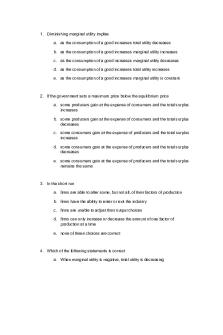
Micro #2 - Lecture notes
- 19 Pages

Micro teaching lecture note
- 1 Pages
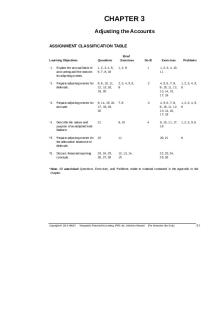
Ch03
- 71 Pages

Formulas de macroeconomía Parkin
- 5 Pages

Micro 2 - Lecture notes 2
- 18 Pages
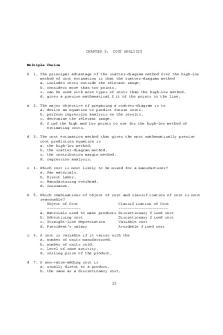
Ch03 - lauderbach
- 15 Pages

Ch03 - solutions
- 73 Pages

Ch03 - ERP
- 14 Pages
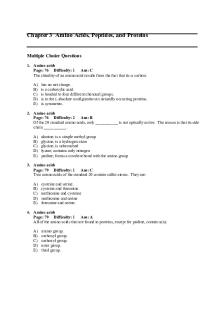
Testbank-4e-CH03 - Lecture notes 1
- 17 Pages

Micro
- 538 Pages

CH03 - testbank
- 15 Pages
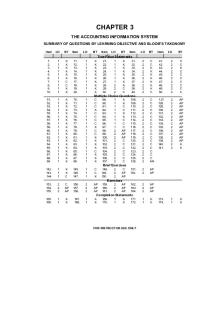
Ch03 - CH3
- 52 Pages

Micro
- 5 Pages
Popular Institutions
- Tinajero National High School - Annex
- Politeknik Caltex Riau
- Yokohama City University
- SGT University
- University of Al-Qadisiyah
- Divine Word College of Vigan
- Techniek College Rotterdam
- Universidade de Santiago
- Universiti Teknologi MARA Cawangan Johor Kampus Pasir Gudang
- Poltekkes Kemenkes Yogyakarta
- Baguio City National High School
- Colegio san marcos
- preparatoria uno
- Centro de Bachillerato Tecnológico Industrial y de Servicios No. 107
- Dalian Maritime University
- Quang Trung Secondary School
- Colegio Tecnológico en Informática
- Corporación Regional de Educación Superior
- Grupo CEDVA
- Dar Al Uloom University
- Centro de Estudios Preuniversitarios de la Universidad Nacional de Ingeniería
- 上智大学
- Aakash International School, Nuna Majara
- San Felipe Neri Catholic School
- Kang Chiao International School - New Taipei City
- Misamis Occidental National High School
- Institución Educativa Escuela Normal Juan Ladrilleros
- Kolehiyo ng Pantukan
- Batanes State College
- Instituto Continental
- Sekolah Menengah Kejuruan Kesehatan Kaltara (Tarakan)
- Colegio de La Inmaculada Concepcion - Cebu
